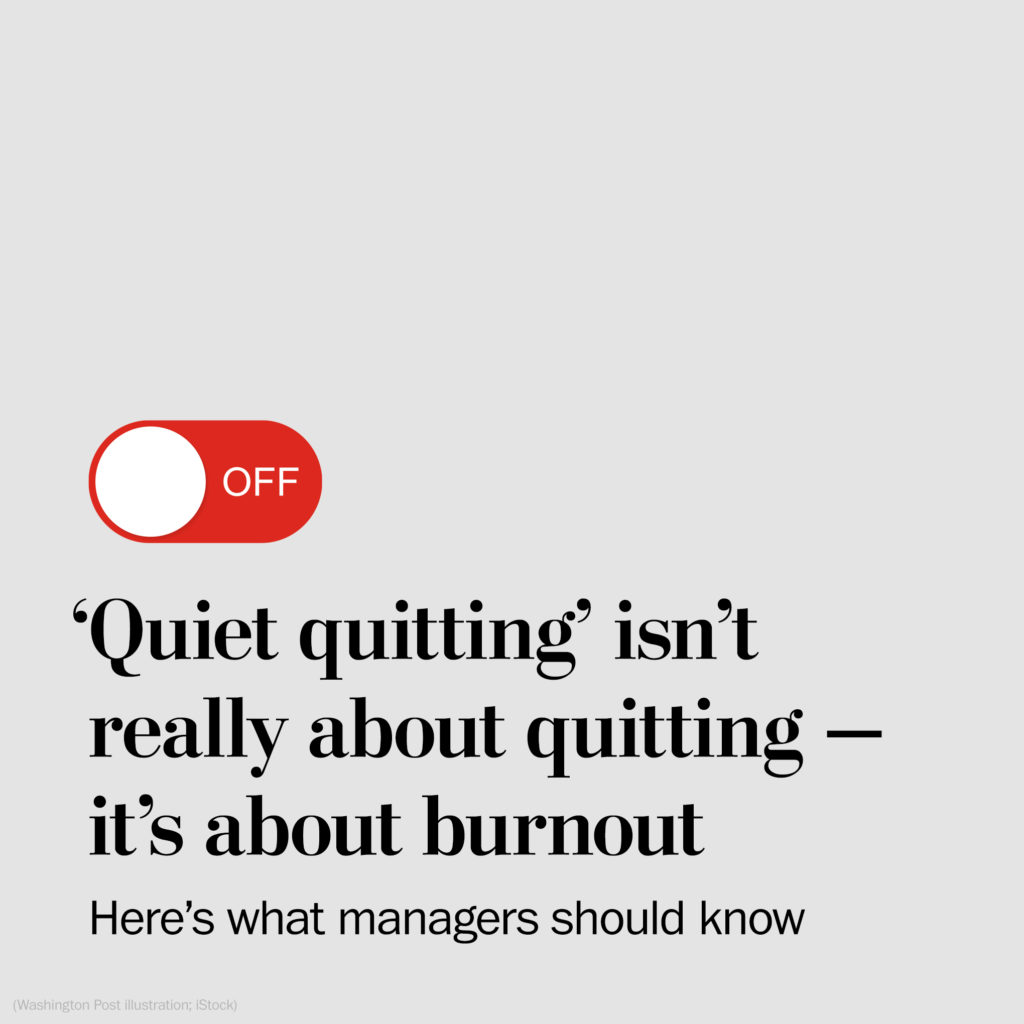Quiet quitting is not new.
There have always been individuals who do not perform up to their full capacity or capabilities. It is a performance issue—a behaviour issue—and it’s always existed in some form or another.
It is the phenomenon where employees do the bare minimum at work. The employees will not take on extra work, or work overtime. Quite quitting also refers to mentally checking out from work. Employees are no longer buying into the myth that to be successful they must subscribe to the “hustle culture and be always available and always ‘on’ 100 percent of the time.” Employees choose mental health and work-life balance over working harder for minimal recognition.
The intention is not to slow down the company, but rather to exert control over their work-life balance and not worry about putting in extra time. They are choosing health, welfare and family as their top priorities and are not concerned with going above and beyond. They want to meet requirements and switch off. This is mostly driven by the Gen Z-ers.

Role of management
The role of the line manager has never been so important. They need to create change by creating an engaging culture for their teams. It is important to remember quiet quitters have not left the company. They are telling you the way they work needs to change.
This is all about change.
Change management and change communication are necessary to manage and guide this situation.
- Have frequent conversations with employees. This is the best way to counteract quiet quitting. Develop a change communication strategy for your organisation to provide more personal support or personalized motivation from the management and leadership team.
- Have regular check-ins to find out if the company can do anything else to improve the employee experience.
- Ensure that employees have the flexibility they need and that it is available to them. Give employees deadlines and timelines but they need to set their own hours and get the job done. Do not set specific hours. This type of workplace change needs to be driven from the top. No one should be putting in 16-hour days and that is the typical 8:00. to 1700 workday may be outdated. Management needs to trust employees to function in this environment. This will require a change process, a leap of faith and management might relinquish traditional control but will pay off in the end.
- Another possible solution could be the implementation of a four-day work week and achieving more in fewer hours. Another change management process.
Two key complaints of quiet quitters are lack of recognition and limited feedback. This is especially true in larger companies and teams.
It is a warning
Quiet quitting is a warning. It is a business risk you need to act on. This is also an opportunity. Quiet quitting needs more engagement, communication, and genuine connections with your employees. React and make proactive changes to improve your business.
What is needed
What is needed are clear business priorities and communication from the top down. Managers who feel empowered, get the best from their people. The most important thing is regular feedback.
The term quiet quitting is about companies realising that employees are no longer going to play the game the same way. Employees are redefining work, and companies can either choose to understand that and reassess how they’re going to treat employees or face more pushback.
#change management #changecommunication #effectivecomunication
